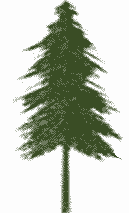Translate this page:
Summary
UPDATE 12/09/2011: Weinmannia racemosa L. f. is a synonym of Leiospermum racemosum (L. f.) D. Don
Physical Characteristics

 Weinmannia racemosa is an evergreen Tree growing to 25 m (82ft 0in).
Weinmannia racemosa is an evergreen Tree growing to 25 m (82ft 0in).
See above for USDA hardiness. It is hardy to UK zone 9. It is in leaf all year, in flower from June to July. The species is hermaphrodite (has both male and female organs).
Suitable for: light (sandy) and medium (loamy) soils and prefers well-drained soil. Suitable pH: mildly acid, neutral and basic (mildly alkaline) soils. It can grow in semi-shade (light woodland) or no shade. It prefers moist soil.
UK Hardiness Map
US Hardiness Map
Synonyms
Plant Habitats
Woodland Garden Canopy; Secondary;
Edible Uses
Edible Parts: Fruit
Edible Uses:
Fruit - raw. A sweet and pleasant flavour[2, 105, 177]. The fruit is about 5mm in diameter[200]. [**CAUTION! The berries are not edible according to Crowe, the main authority on New Zealand edibles,see page 165 A field Guide to the Native edible plants of New Zealand 1997 edition. He says the error probably started with Sturtevant getting confused with Tawa (Beilschmiedia tawa, one of the best N.Z edibles I think, if you can adjust to fruit tasting like potato)which has a similar Maori name.
He does not however say it is poisonous and it is not listed anywhere as poisonous as far as I can see.
It was however very valuable to Maori for other uses above and bark was once exported for very high tannin content. David Nicholls, New Zealand]
References More on Edible Uses
Medicinal Uses
Plants For A Future can not take any responsibility for any adverse effects from the use of plants. Always seek advice from a professional before using a plant medicinally.
None known
References More on Medicinal Uses
The Bookshop: Edible Plant Books
Our Latest books on Perennial Plants For Food Forests and Permaculture Gardens in paperback or digital formats.

Edible Tropical Plants
Food Forest Plants for Hotter Conditions: 250+ Plants For Tropical Food Forests & Permaculture Gardens.
More

Edible Temperate Plants
Plants for Your Food Forest: 500 Plants for Temperate Food Forests & Permaculture Gardens.
More

More Books
PFAF have eight books available in paperback and digital formats. Browse the shop for more information.
Shop Now
Other Uses
Dye Tannin Wood
A black dye is obtained from the bark[153]. The bark contains about 13% tannin[46, 61, 123, 153]. Wood. Used in cabinet making[153].
Special Uses
References More on Other Uses
Cultivation details
Prefers a light rich soil[1]. Succeeds in a fertile well-drained circum-neutral loamy soil, with shelter from cold winds[200]. Plants are not very frost-tolerant, though they are probably hardy in the mildest areas of the country[11, 166]. The foliage of this tree when an adult is markedly different from the juvenile foliage, though plants begin to flower whilst still in the juvenile form[200].
References Carbon Farming Information and Carbon Sequestration Information
Temperature Converter
Type a value in the Celsius field to convert the value to Fahrenheit:
Fahrenheit:
The PFAF Bookshop
Plants For A Future have a number of books available in paperback and digital form. Book titles include Edible Plants, Edible Perennials, Edible Trees,Edible Shrubs, Woodland Gardening, and Temperate Food Forest Plants. Our new book is Food Forest Plants For Hotter Conditions (Tropical and Sub-Tropical).
Shop Now
Plant Propagation
Seed - we have no information for this species but suggest sowing the seed in spring in a warm greenhouse. Prick the seedlings out into individual pots when they are large enough to handle. Overwinter the young plants in a greenhouse for at least the first winter and plant out in their permanent positions in late spring or early summer. Give some protection for its first winter outdoors. Cuttings of half-ripe wood, 5 - 8cm with a heel, July/August in a frame[78].
Other Names
If available other names are mentioned here
Native Range
Coming Soon
Weed Potential
Right plant wrong place. We are currently updating this section.
Please note that a plant may be invasive in one area but may not in your area so it’s worth checking.
Conservation Status
IUCN Red List of Threatened Plants Status :

Growth: S = slow M = medium F = fast. Soil: L = light (sandy) M = medium H = heavy (clay). pH: A = acid N = neutral B = basic (alkaline). Shade: F = full shade S = semi-shade N = no shade. Moisture: D = dry M = Moist We = wet Wa = water.
Expert comment
Author
L.f.
Botanical References
1144200
Links / References
For a list of references used on this page please go here
Readers comment